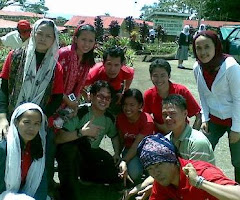lesson #2
This session facilitates the students to share and discuss their own ideas and feelings about conflict and to explore whether conflict has a positive value in human interaction. This will also provide students an opportunity to examine and analyze different types of conflicts, their root causes and manifestations.
1.
Conflicts are part of our everyday lives. They are facts of life. Without conflict there is no change. They can be positive or negative depending on who handles them. They can either destroy or spur growth.
Conflicts have their own energy which can be expressed or suppressed.
If expressed constructively, they spur personal, social and political development. When conflicts intensify and escalate, these can lead people and groups to animosity, polarization, and violence.
Violence can consist of actions, words, attitudes, structure, or systems that cause physical, psychological, social or environmental destruction.
Instruments of violence may be physical, cultural, structural, or psychological. Responses to conflict that lead to peace include: conflict prevention, conflict settlement, conflict management, and conflict resolution and transformation.
2.
Conflict is a relationship between two or more parties who have, or think they have, incompatible goals. Violence consists of actions, words, attitudes, structures, or systems that cause physical, psychological, social, or environmental damage and/or prevent people from reaching their full human potential.
Conflicts could be symbols of a healthy and dynamic society, if addressed properly. Latent conflict is a conflict that is not out in the open, but which may be brought into the open in order to be addressed effectively.
Open conflict is a conflict that is deeply rooted and visible, which requires actions that target its root causes and control or transform its effects.
Surface conflict may only be a misunderstanding of goals and could be improved by communication.
Positive conflict is a conflict, which is non-violent and brings about positive change.
Negative conflict is a conflict, which is violent and hurts people.
3. the Peace Building Map

4. By looking at the Peace Building Map, answer the following questions:
Who start or produce conflicts?
What do we mean by prevention, management, settlement, resolution, and transformation given the flow of the development of conflict?
Can you cite any conflict and identify what stage it is given the map?

 Time in Manila, Philippines
Time in Manila, Philippines 




No comments:
Post a Comment